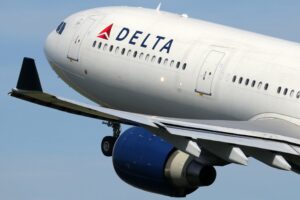Delays are an unpleasant but inevitable part of air travel, but delays on the tarmac after boarding the airplane can be especially frustrating — and potentially dangerous.
On Monday, the U.S. Department of Transportation said it would fine American Airlines $4.1 million for violating rules over how long airlines can keep passengers stuck on the plane on the ground during delays.
On delayed domestic flights that sit either at the gate or elsewhere on the ground, the DOT prohibits airlines from keeping passengers stuck on the plane for more than three hours without allowing them to get off the aircraft. The limit for international flights is four hours, and the DOT requires airlines to offer passengers water and snacks after more than two hours.
Want more airline-specific news? Sign up for TPG’s free biweekly Aviation newsletter.
The fine covers 43 rule violations between 2018 and 2021, averaging just under $95,350 per flight. The total fine is the largest ever issued for violating the regulation, the DOT said. It was issued alongside a cease-and-desist letter warning American to avoid future violations.
“This is the latest action in our continued drive to enforce the rights of airline passengers,” U.S. Transportation Secretary Pete Buttigieg said in a statement. “Whether the issue is extreme tarmac delays or problems getting refunds, DOT will continue to protect consumers and hold airlines accountable.”
Of the $4.1 million, $2.05 million will be credited to the airline to cover compensation to passengers, the DOT said.
“DOT encourages airlines to compensate passengers by providing these credits so that a portion of the civil penalties that would have been paid to the Federal Treasury is instead used to compensate the affected passengers,” the department said in its announcement.
Tarmac delays that violate the DOT limits are rare — the 43 noncompliant flights represent less than 0.001% of American’s flights between 2018 and 2021. However, such delays stand out as uniquely frustrating experiences during more commonplace disruptions. In some cases, cascading delays may mean that there’s no gate readily available for an incoming aircraft or that ground marshallers are overwhelmed by a rush of departures or arrivals.
Regardless of the cause, they can lead to unpleasant situations — or worse — when airlines fail to manage them in a way that complies with the three-hour limit or other regulations. Even when the delay falls under three hours, extenuating circumstances can make such disruptions especially troublesome.
Last month, Delta Air Lines was criticized after a flight was delayed for 90 minutes on the ground in Las Vegas while temperatures were over 100 degrees, causing at least one passenger to require medical attention. The DOT previously said that it is investigating the incident.
Also in July, passengers at Newark Liberty International Airport (EWR) were stuck on a plane without air conditioning for nearly seven hours.
For its part, American said that it regretted the inconvenience caused to passengers and had implemented new tools in recent years to minimize the risk of such disruptions.
“American has committed substantial time and resources to improve its performance on tarmac delays, such as the deployment of Hub Efficiency Analytics Tool (HEAT) to shift arrivals and departures around severe weather to help avoid conditions that can lead to lengthy tarmac delays,” a spokesperson said in a statement. “We also built new smart gating technology that reduces taxiway congestion and the time aircraft spend waiting for available gates.”
“These efforts are already providing significant benefits to our customers and team members, and we continue to look for innovative ways to further improve,” the statement added.
Related reading:


